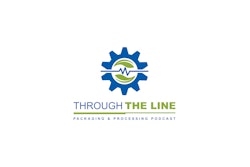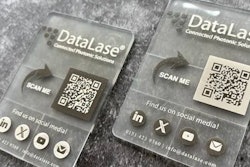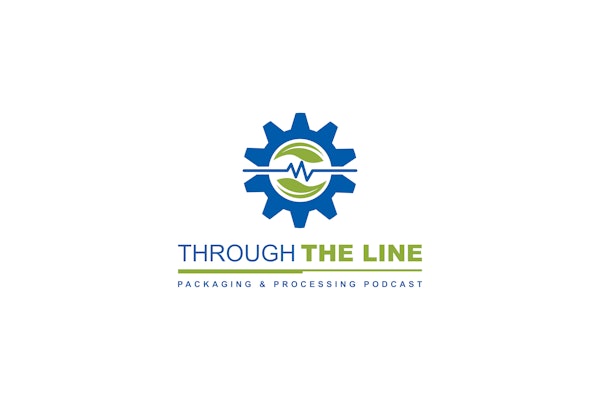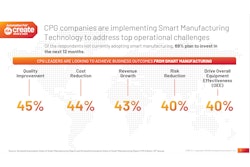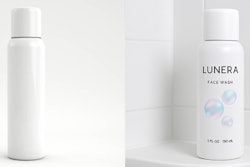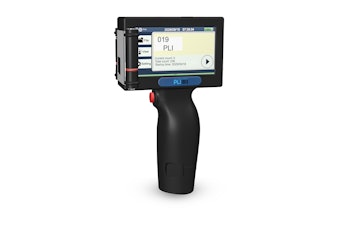
At this week’s London Packaging Week at Excel London, Kevin Marshall, senior director of design, packaging and content at Microsoft, discussed the importance of inclusive design in his presentation “Non-Negotiable Design: Why Inclusive Packaging Must Work for All.”
As Marshall shared, accessibility is “a fundamental right, not a feature,” adding that packaging often serves as “the first barrier or bridge between people and the products they need.” His presentation emphasized the role of accessibility as an essential part of effective and responsible design. Designing inclusively, he explained, means meeting people “where they are, as they are.”
Inclusive design, he added, unifies people while recognizing individuality. Every design decision, he emphasized, carries weight. “Every decision we make as creators can raise or lower barriers to participation in society,” he told the audience. “It’s our collective responsibility to lower those barriers through inclusive products and practices.”
Marshall also pointed out the scale of the challenge, noting that 1.3 billion people—around 15% of the global population—experience significant disabilities. He also reminded the audience that at some point, we’re all going to experience or be impacted by some form of disability. “It’s just part of being human,” he said.
Rethinking success through accessibility
As Marshall explained, for Microsoft, the importance of designing for inclusion became clear through a product design project that challenged long-held assumptions. The pivotal moment came with Microsoft’s development of the Xbox Adaptive Controller, a gaming device created for players with limited mobility. Marshall shared how that launch transformed the company’s approach to packaging as well. “We discovered principles that we didn’t know existed,” he said. “Principles like ‘nothing about us without us,’ or ‘design for one, extend to many.’”
The team quickly realized that if a controller was built to include more people, the packaging itself needed to reflect the same intent. That realization led to a profound shift in what success meant for Microsoft’s packaging team. “We completely reinvented how we approached creating a package and what a package can be,” Marshall said.
The reaction from customers was immediate. He recalled a gamer from New Zealand who posted an emotional unboxing video. “He said, ‘It’s like you see me. Who thinks about me when they make a box?’ One of my designers actually wrote him back and said, ‘We think about people like you when we design boxes,’” Marshall shared.
 A slide from Kevin Marshall’s presentation at London Packaging Week illustrates Microsoft’s inclusive approach to packaging design, highlighting community involvement, iterative design processes, and principles such as 'Nothing about us without us.'PMMI Media Group
A slide from Kevin Marshall’s presentation at London Packaging Week illustrates Microsoft’s inclusive approach to packaging design, highlighting community involvement, iterative design processes, and principles such as 'Nothing about us without us.'PMMI Media Group
That moment inspired both operational and cultural change at Microsoft. “From that point forward, we decided to really lean in and build an operational foundation and a design culture around inclusive experiences,” he said. The outcome of that effort was a set of accessible design principles that continue to guide the company’s work today. These principles, detailed in Microsoft’s inclusive design guide, serve as the foundation for designing products that work for everyone.
The accessible design principles
The guide identifies nine core principles:
- Simple is best. Explained Marshall, “More simple steps are easier than fewer complicated steps.” The goal is to create packaging that is straightforward and intuitive.
- Identifiable elements. Features must be easy to locate and understand. Clear visual and tactile cues guide users naturally through unboxing.
- Materials matter. “People are inventive,” the guide notes, emphasizing that materials should be safe and pleasant to handle for users with varying dexterity.
- Ready access. “People want to engage with products on their own terms,” the guide explains. Multiple access points allow flexibility.
- Reduce pivot-points. The fewer motions needed to open a package, the more inclusive the design.
- Low physical effort. Packaging should require minimal strength or grip.
- Size, space, stability. “Be mindful of how products are contained,” the guide advises, ensuring that users of all body types can access products easily.
- Mindful moments. Marshall said that “physical and visual moments are more accessible when they’re unmistakable and lead the user to the next logical step.”
- No tools needed. Packaging should not require scissors, knives, or other instruments to open. “Designing straightforward packaging that performs with no assistance required seems obvious,” Marshall said, “but it’s tricky when you consider the breadth of diversity of consumers.”
From principle to practice
Marshall described how these principles shape real products. In discussing Microsoft’s redesign of its Surface and Xbox Series X console packaging, he said, “Principles applied become a language. As long as you’re designing with your customer and not just for your customer, you stand a pretty good chance of doing something that resonates.”
For the Surface family of touchscreen-based personal computers, tablets, and interactive whiteboards, Marshall’s team focused on subtle inclusivity—packaging that felt premium but not “purpose-built.” For Xbox, accessibility was front and center, with bold tactile cues and structural consistency across models. “It’s proof that as long as you’re putting people and their needs at the center of your work, inclusive package making isn’t an exercise in rinse and repeat, but more an exploration into possibility.”
He also described the development of the Xbox Adaptive Joystick package as an example of how inclusive design can support business goals. The team used an existing automated box to keep costs low while adding accessible features such as loops, die cuts, and tabs. “Inclusive packaging design did not create imbalance in the cost equation,” Marshall said. “It did its part to facilitate business success.”
Designing with, not for
Marshall also underscored the value of collaboration. “Co-designing is more than just running user tests or surveying customer preferences,” he said. “It’s the recognition that members of the disability community are the true experts.”
At Microsoft, this philosophy takes shape in the Inclusive Tech Lab, a space built to support learning directly from people with disabilities. The lab brings together designers, engineers, and community members to explore how different assistive tools work together.
“People don’t use assistive tools one at a time,” a member of the lab team explained in a video shared by Marshall. “They layer them.” This layering helps the team understand how products and packaging function in real-world contexts, revealing where barriers still exist.
The lab’s design itself also reflects intentional inclusivity. Every texture, color, and acoustic element was chosen to ensure comfort for visitors who may be sensitive to sensory environments. The space hosts tours, workshops, and inclusive design sprints that encourage collaboration between Microsoft teams and external partners. “The lab is a place where we have the freedom to explore what an ideal accessible world looks like,” one team member said.
Marshall called the lab a cornerstone of Microsoft’s inclusive design process. “Creating an accessible product is simply not enough,” he said. “We want to make sure it’s a great and empowering experience.”
The lab’s approach emphasizes storytelling as a bridge between design and empathy. Members of the disability community share their lived experiences, giving designers a deeper understanding of how packaging and products impact daily life. These conversations, Marshall said, help designers make a genuine emotional connection with people who use their products.
An invitation to the industry
The presentation concluded with an invitation to explore Microsoft’s inclusive packaging design guide. “We decided to put all of our learnings into one place and open source our accessibility journey,” Marshall said. The guide offers practical steps, metrics, and models for companies looking to begin or expand their accessibility journey. “It’s not perfect,” he admitted, “but it’s a start.”
Marshall concluded his presentation with a reflection on the ongoing effort required to create meaningful change. “We can’t change the world overnight, and we can’t change the world alone,” he said. “But that doesn’t mean we shouldn’t avail ourselves of the little opportunities to make a difference where and when we can.” PW

